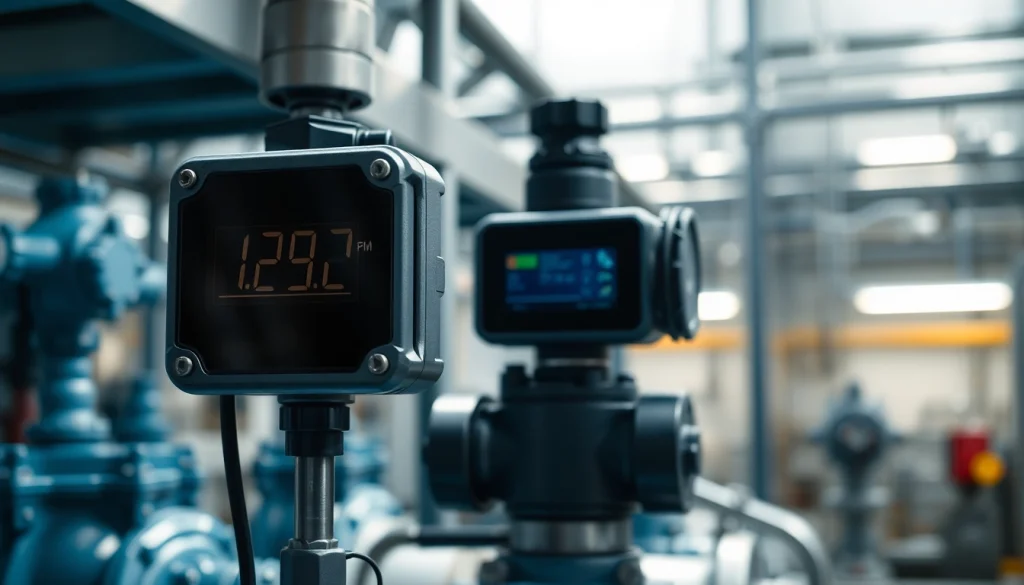
1. Introduction to Hydrogen Detection
1.1 What is Hydrogen Detection?
Hydrogen detection refers to the methods and technologies used to identify the presence of hydrogen gas (H₂) in the atmosphere. Given hydrogen’s flammable properties and its potential hazards, effective detection is crucial in various settings. Various sensors and monitoring systems are designed to detect even the smallest concentrations of hydrogen, typically measuring in parts per million (ppm). This sensitivity is essential because hydrogen, being the lightest and most abundant element in the universe, has a low ignition threshold and can lead to catastrophic explosions if not monitored properly. Techniques range from traditional sensor technologies to advanced electronic systems using microelectronic and photoelectric detection methods. For more comprehensive insights into hydrogen detection technologies, you can refer to Hydrogen detection resources available online.
1.2 Importance of Hydrogen Detection in Safety
Detecting hydrogen is a matter of safety across industrial, commercial, and residential environments. Accumulations of hydrogen gas can lead to dangerously explosive atmospheres, especially in confined spaces. Effective detection systems ensure rapid identification of leaks, allowing for timely responses to mitigate the risks of fire and explosion. Investing in hydrogen detection technologies not only complies with safety regulations but also protects lives and property. The importance of hydrogen detection systems is further underscored by the ongoing transition to hydrogen as an energy source, where safety protocols must evolve in tandem with adoption.
1.3 Overview of Hydrogen Applications
Hydrogen is increasingly becoming a key player in various sectors, serving as a clean energy carrier, reducing carbon emissions in power generation, and acting as a vital element in industrial processes, such as refining and ammonia production. Its use in fuel cells for electric vehicles is also gaining momentum, necessitating robust detection systems to ensure safety. As the hydrogen economy expands, so does the necessity for effective monitoring solutions that evolve with technological advancements and safety standards.
2. Technologies Used in Hydrogen Detection
2.1 Electrochemical Sensors for Hydrogen Detection
Electrochemical sensors are among the most common devices used for hydrogen detection. These sensors operate using an electrochemical reaction that occurs when hydrogen gas interacts with a specific sensor material. When hydrogen comes into contact with the sensor, it generates a current proportional to the concentration of hydrogen in the environment. These sensors are prized for their accuracy, low detection limits, and relatively low cost. Many models can measure hydrogen concentrations ranging from a few parts per million to thousands, making them suitable for various applications ranging from personal safety devices to industrial monitoring installations.
2.2 Semiconductor Gas Detection Methods
Semiconductor gas sensors are based on metal oxide technology, where the sensor’s resistance changes in the presence of hydrogen gas. These devices require higher operating temperatures compared to electrochemical sensors but are known for their robust performance across various temperature ranges. Semiconductor sensors are particularly valued in applications where bulk sensitivity to gases like hydrogen is critical. They are simple to install and often used in portable sensors, industrial safety equipment, and environmental monitoring stations.
2.3 Optical Detection Techniques for Hydrogen
Optical detection methods leverage light-wavelength changes induced by hydrogen gas. These solutions can include tunable diode laser absorption spectroscopy (TDLAS) and photoacoustic spectroscopy, thus providing highly sensitive readings with the ability to detect hydrogen concentrations at extremely low levels. Optical systems are particularly beneficial in applications where conventional sensors might fail or require frequent calibration, as they can be less susceptible to contamination and environmental factors. These high-end systems are advancing the field of gas detection technology, particularly in research and advanced industrial applications.
3. Common Applications of Hydrogen Detection
3.1 Industrial and Manufacturing Contexts
In industrial settings, hydrogen detection is vital for maintaining workplace safety. Hydrogen is commonly utilized in chemical manufacturing, refining, and food processing. Facilities handle hydrogen in various forms, requiring effective detection systems to prevent leaks. From refineries to semiconductor manufacturing plants, hydrogen sensors are integrated into existing safety protocols to ensure operational integrity. Moreover, compliance with OSHA and other regulatory bodies necessitates the implementation of robust detection strategies, minimizing the risk of catastrophic events due to unnoticed leaks.
3.2 Environmental Monitoring and Safety
Hydrogen gas emissions can pose environmental risks, particularly in industries that generate byproducts containing hydrogen. Detection technologies are employed in environmental monitoring systems to track hydrogen levels in emissions and ensure air quality. Regulatory compliance demands accurate reporting and continuous monitoring of hydrogen levels, motivating companies to invest in reliable detection methodologies. The need for effective monitoring systems extends into urban infrastructure, particularly with the increasing focus on hydrogen fuel technologies.
3.3 Impact on Hydrogen Fuel Technologies
As hydrogen fuel cells gain traction in the automotive industry, hydrogen detection has become a crucial aspect of safety protocols surrounding this technology. Hydrogen-powered vehicles require seamless integration of detection systems to ensure both vehicle safety and environmental responsibility. Ongoing advancements in hydrogen storage and transport technologies also emphasize the significance of having precise detection methods to monitor any leaks or safety hazards during refueling or transit. In the broader context of a shift toward sustainable energy, effective hydrogen detection will play a critical role in enabling safe and efficient fuel utilization.
4. Best Practices for Hydrogen Detection Implementation
4.1 Selecting the Right Detector for Your Needs
Choosing the appropriate hydrogen detector involves considering numerous factors including the environment where the detector will be used, the required sensitivity level, and the potential presence of other gases. It is advisable to evaluate product specifications, sensor types, and manufacturer reliability. Conducting a thorough risk assessment and consulting with industry experts can provide insights needed for tailored safety measures. Moreover, understanding calibration requirements for the selected detection systems ensures they are operating optimally.
4.2 Regular Calibration and Maintenance
Regular calibration and maintenance of hydrogen detection systems are fundamental practices to ensure reliability and accuracy. Depending on the specific technology and application, calibration can occur as frequently as monthly or quarterly. Operators should adhere to manufacturer guidelines for sensor checks and recalibrations, making note of any drift in detection sensitivity. Maintenance routines should also include visual inspections to detect wear and tear or potential environmental impacts affecting sensor function. A scheduled maintenance program significantly contributes to the longevity and effectiveness of detection equipment.
4.3 Establishing Safety Protocols and Training
Implementing comprehensive safety protocols surrounding hydrogen detection is essential. This includes defining emergency response procedures, setting thresholds for alarm activation, and ensuring that personnel understands their roles during an emergency. Regular training sessions increase awareness and understanding of detection technologies, enabling staff to respond effectively to potential hazards. Organizations should also conduct regular drills, reinforcing safety protocols in real-world situations, ultimately minimizing reliance on equipment alone.
5. Future Trends in Hydrogen Detection Technologies
5.1 Innovations in Sensor Technologies
The future of hydrogen detection technologies lies in the integration of innovative sensor solutions that enhance sensitivity, accuracy, and functionality. Advanced nanotechnology is being researched to improve the responsiveness of sensors, while developments in artificial intelligence (AI) are paving the way for smarter detection systems capable of predicting leaks based on historical data patterns. Such innovations promise to significantly bolster the effectiveness of hydrogen safety measures in various applications.
5.2 Integration with Smart Systems
As industries move towards smart technology, hydrogen detection systems are evolving to integrate with IoT (Internet of Things) frameworks. This integration allows for real-time data sharing and analytics, enabling proactive rather than reactive safety measures. Smart detectors can remotely communicate with monitoring systems, alerting personnel and triggering automatic safety responses upon detecting leaks. This transformative trend increases situational awareness and can significantly reduce potential hazards associated with hydrogen use.
5.3 Enhancing Compliance with Regulations
As hydrogen use expands, so does the regulatory landscape governing its safe utilization. Future hydrogen detection technologies will need to simplify compliance processes, allowing industries to efficiently meet safety standards without compromising on performance. Automated reporting features that sync with regulatory databases can reduce the administrative burden on organizations while ensuring real-time compliance monitoring. Evolving regulations will necessitate ongoing engagement with technology developers to adapt detection systems to meet emerging standards.






